The Institute for Judicial Studies by Leah Nelson
lnelson@judicialstudies.com - Posted 07-30-08
Nearly half the members of the State Supreme Court are Acting Justices who received their seats by an appointment process that is practically invisible. In its February 2007 report, Chief Judge Judith Kaye’s Special Commission on the Future of New York State Courts concluded, “New York State has the most archaic and bizarrely convoluted court structure in the country.” Among the many manifestations of that reality, consider the opaque, mysterious, and possibly unconstitutional process by which New York City’s “Acting” Supreme Court Justices are selected.
New York’s Constitution allots one elected Supreme Court Justice per 50,000 residents of a Judicial District, a number far below demand. Only a Constitutional amendment would change this outdated ratio. (Don’t hold your breath.) But the Unified Court System routinely makes an end run around this limitation. New York’s Constitution allows for the “temporary” appointment of Acting Supreme Court Justices, and the Court System drives a convoy of trucks through this loophole on a regular basis. Some 137 (44 percent) of the five Boroughs’ 308 Supreme Court Justices sit under acting appointments, with 41 of them having held those posts for more than 10 years (the length of a single term for a lower court judge). Thirteen in Manhattan alone have held their “temporary” positions since the 1980’s — longer than a single term (14 years) in the Supreme Court, and far longer than a term in a lower court. What’s more, though administrators of the process describe a careful vetting process, it is largely informal and completely invisible to outsiders.
STANDARD BARING
Acting Justices have powers identical to their elected brethren, and although their performance is reviewed yearly by the Office of Court Administration, they are almost never sent back down to lower court. How does the Court system pick candidates for these prestigious, borderline Constitutional positions?
Many of them aren’t picked at all: Instead, they come automatically from the gubernatorially-appointed and legislatively approved judges of the Court of Claims. To increase the number of Supreme Court Justices quickly, the Legislature in 1973 added a new category of Court of Claims Judges who are appointed Acting Supreme Court Justices by the Chief Administrative Judge immediately after their confirmation, according to Chief Clerk Bob DeCataldo. As of Spring 2008, 47 of Manhattan’s 84 Supreme Court Justices are Acting, 10 from the Court of Claims. All other Acting Justices are appointed by the Chief Administrative Judge from the three lower courts — Civil, Criminal, and Family.
How does she know whom to pick?
According to a spokesperson for the Office of Court Administration, “Acting Supreme Court Justices are appointed based on workload and the operational needs of the court. Legal scholarship, seniority, and other qualifications are also taken into account.” Asked to expand on how this account-taking is accomplished, official court spokesman David Bookstaver said, “Part 121 of the [Administrative] Rules is quite clear on how the decision-making process is conducted, and the Rule speaks for itself.” The formal rule requires that a specific lineup of administrative judges “take into account productivity, scholarship, temperament, and work ethic.” Sounds logical and appropriate, as far as it goes. But almost none of it is accounted for in any publicly accessible way.
WHAT REALLY HAPPENS
A longtime court insider who has been part of the selection process, but who requested anonymity, was able to fill in some of the more gaping holes in these explanations. These days, he said, Acting Justices are rarely appointed from the lower courts with the expectation that they will stay for long. Felony filings have fallen substantially in recent years, while filings in the Supreme Courts’s Civil Term have remained “flat.” Most Acting Justices appointed from the lower courts are only substituting for Supreme Court Justices out on extended medical leave or otherwise will not be away for long. There’s a great need for judges in the lower courts, and Acting Justices now come up from them “with the understanding that it’s temporary,” the insider said: “They call it a ‘pop-up Acting.’ ” He also noted that, despite this need for lower court judges, Chief Administrative Judge Ann Pfau does not want to kick any of the long-serving Acting Justices back down to the lower court to which they were elected or appointed, where they would be forced to work on less exciting cases and earn less money doing it. Judge Pfau’s office said she was unavailable to comment for this article.
As to selection, said the bureaucratic veteran, “It’s a really informal process at this point. Like, ‘We need an Acting Justice in Queens for five months; who’s it going to be?’ ” Among the things that come into play in choosing Acting Justices are “hours, the number of days you work. . . . If someone has a reputation for abusing staff, that would come up,” the insider said. For “people who are going to be chosen [as] ‘Actings’ now, generally the review is, ‘Do they work hard, are there any temperament problems?’ . . . If someone has bad work habits, we’re not going to make them an Acting,” the insider said. “We keep productivity statistics just like every other system, and those are the points that are debated.” Debated within administrative chambers, perhaps, but not without. To decide, the Chief Administrative Judge consults with the Administrative Judge of the Supreme Court Term that needs a temporary substitute, the Presiding Judge of the Appellate Division, the Supervising Judge of the Lower Court from which the Acting Justice is to be drawn, and the Deputy Chief Administrative Judge for the region.
SENIORITY RULES
Joan Carey, Deputy Chief Administrative Judge for New York City, has helped vet many potential Acting Justices. “Seniority is pretty much the lynchpin” of the selection process, she said. “We obviously look at the person’s scholarship and temperament, but let’s say you have six judges and they’re all pretty much equal,” then, “all things being equal,” the one who has been at the bench longest will get the promotion.
Of course, things are not always equal.
“If somebody’s been reversed 500 times by the appellate terms, then you don’t want them because they don’t know the law,” Carey said. (The veteran judge vetter who requested anonymity disagreed, saying it is extremely rare for someone’s legal proclivities to affect appointment. He noted that Edward McLaughlin, who has been an Acting Justice in Manhattan’s Criminal Term since 1986 and has been reversed more than once for ad-libbing instructions to the jury — which has not affected his status — and the insider quickly made it clear that he admires McLaughlin’s intellect and temperament.) “Being reversed is between the Appellate Division and him,” he said. Unfortunately, there is no information available about whether McLaughlin had the same tendencies when he was a Criminal Court Judge, before his elevation to Acting Justice in 1986.
And, again: neither the Office of Court Administration nor the appellate courts maintain reversal records on jurists. So that standard represents more of an impression than a metric — at least to outside observers. Beyond track records, the Court’s needs also play a role in determining appointments: Specialized parts need specialized judges, so when the vacancy is in an Integrated Domestic Violence Part, for instance, “Then we might go outside the seniority aspect of it,” said Carey. To identify the best candidate for the job, Judy Harris Kluger, Deputy Chief Judge for Operations and Planning in New York State, who is responsible for finding judges to fill empty spots in New York City’s specialized courts, “will probably go out into the legal community and find out who would be best with that,” Carey said. “She looks for a judge who has that kind of social worker background or mentality.”
Carey herself is the product of the appointment system, never having been elected.
When Carey is looking for someone to fill a more general spot, lower courts’ Supervising Judges play a key role in evaluating candidates, maintaining records of credible complaints by lawyers and litigants, monitoring absenteeism, and generally keeping track of the habits and reputations of the judges the oversee.
More than 40 percent of Manhattan’s Acting Supreme Court Justices are former Civil Court Judges, so Justice Martin Shulman, Supervising Judge of Manhattan’s Civil Court, is often asked for his opinion. Shulman, an elected Supreme Court Justice, emphasized that his role is small and that Chief Administrative Judge Ann Pfau (also never elected — click here to check out her complicated resums) makes the final decision about who will be elevated. When asked his opinion, however, Shulman was expansive: “The qualities [I look for] would be temperament, good work ethic, feedback if I manage to get that from the bar, someone who takes on complicated cases; [what] is that judge’s ability to navigate the shoals and so forth,” Shulman said. “Qualities that I expect from myself.” And not everyone deserves a promotion, he said. “I’ll say, ‘Well, that person has more than average absenteeism; when assignments are made that person complained.” Such judges, Shulman said, “are few and far between. I have some wonderful judges here.”
MERITRICIOUS?
Taken together, the whole system for appointing Acting Supreme Court Justices sounds an awful lot as if it’s merit-based — strange, because of the many things that New York’s judicial selection process has been called, “merit-based” is explicitly not among them. The Fund for Modern Courts supports an appointive system but has no official position on Acting Supreme Court Justices. Executive Director Dennis Hawkins, however, said “in a general sense,” the system for appointing them “has the elements of what we believe.”
(Click here for a detailed description of the process the Fund advocates.)
But of the various ways in which a seat at the New York State Supreme Court bench can be achieved in New York City, Hawkins said, the path taken by Acting Supreme Court Justices appointed to the Criminal Court by the Mayor is most similar to what the Fund for Modern Courts advocates. For each open Criminal Court seat, the Mayor’s Advisory Committee on the Judiciary nominates three candidates, and the mayor appoints his choice from among that group, a spokesperson from City Hall explained. Hawkins was pleased to hear that there is some kind of qualifications check, however informal, for Acting Supreme Court Justices. “It isn’t a traditional merit system,” he said. But it’s “a good thing [that] they’re looking at what their track record is.” If only the rest of us could see that record as well.
For previous musings on Acting Justices’ roles in New York State’s “archaic and bizarrely convoluted court structure” from Judicial Reports, click here and here.





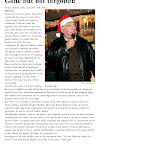

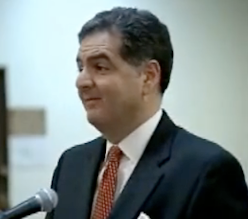
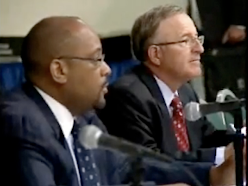
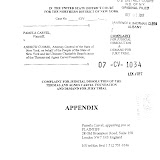
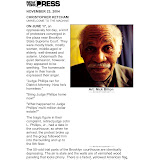
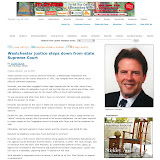
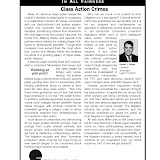

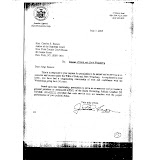
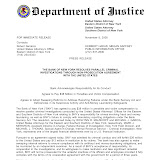
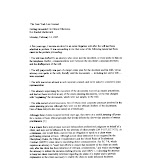

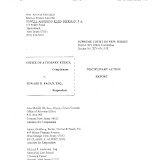
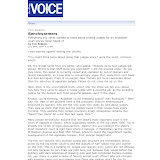
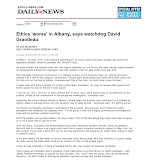
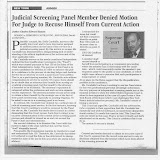

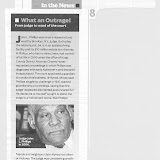
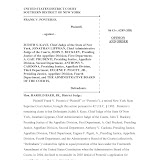
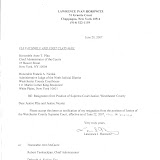
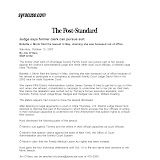
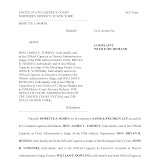

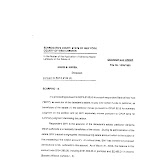
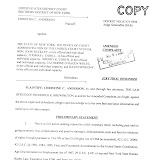
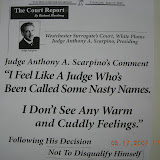
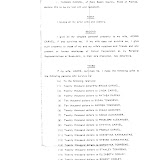
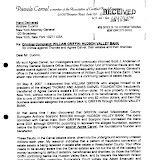
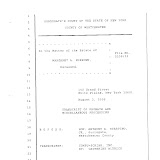
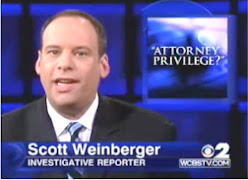
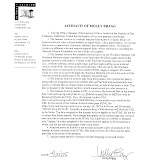
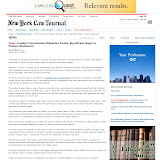
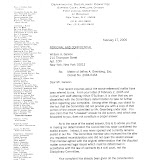
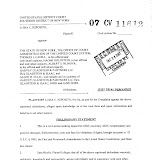
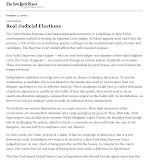
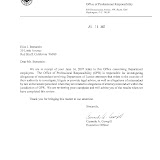
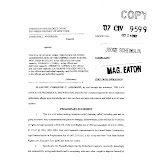
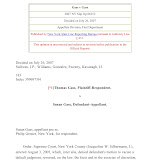
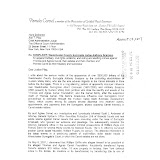

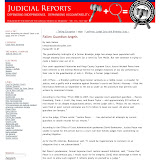
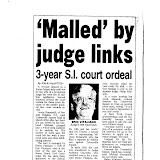
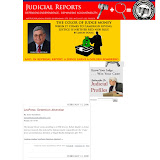
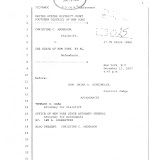
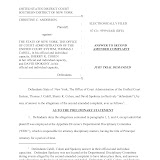
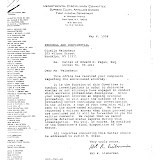
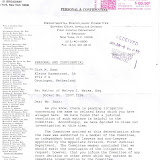
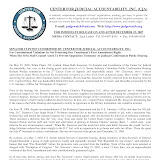
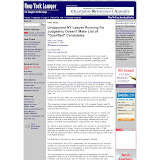
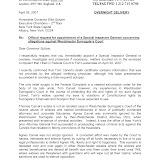
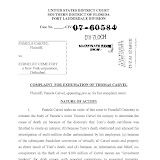
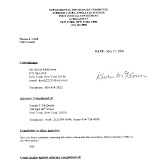
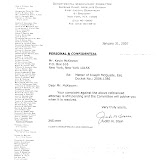
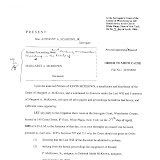
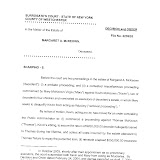
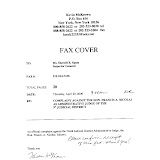
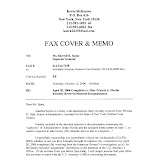
12 comments:
There haven't been real elections for judges in New York, at least in my life time. I'm 77 years old and enjoy this website. Who addresses election fraud? The FBI?
This is a very insightful article from Judicial Reports reporter Leah Nelson. The subject is very upsetting, though. How was this allowed to happen?
TO THE COMMENT ABOVE BECAUSE JUDY KAYE THE BIGGEST RAT OF HE BUNCH HAS NOT RETIRED YET AND THE FEDS ARE SLEEPING INSTEAD OF DOING A RAID AND TAKING TO JAIL ALL THE DIRTY JUDGES, ATTORNEY AND OTHER RATS.
In upstate NY the 'acting" title is rampant and includes city court judges becoming acting county and supreme. The replacements for the city court vacancies due to this violation of the temporary appointments, comes from the towns and villages!
The choices are purely political and carry no semblence of seniority or excellence or exhibition of the best qualifications. The positions are filled from judges who lost elections, judges who went to the same law school as an administrative judge, judges with the same ethnicity and connections to the key appointer!
The OFFICE OF COURT ADMINISTRATION is full of it again, in their coverup of this tremendous abuse of power! They are lying and kidding no one who is aware of it.
The media must report this travesty in the judicial system, which is a con on the taxpayer!
Every judicial administrative and ordinary judge is aware of this process and not one of them has spoken against it, knowing that the voter has the right and duty to vote for the judges filling these jobs!
Judy Kaye should be tried on ethics violations, as well as unconscionable abuses of power, criminal and organized crime activity, which this process can be defined as such, and forced to spend her final years of life in prison!
Taxpayers should revolt!
most of these people as BAD ACTORS, they are hacks that have to led around by the hand. It's a bad joke, they don't know the law and some of the smarter ones will ask the court personel what to do.
A lawyer told me that thier is such a thing. If a civil court judge dimisses many if not all his/her cases it lokks good for thier record. I was told that the courts keeps knows how many cases went before that judge. The courts wants cases thrown out especially if they have been around for a few years. This way the big shots can say that cases are moving and the judges are getting things done.
i was told that that is a way to get promotions and raises.
A judge throws out the cases by deciding against the party with less money. This way thier is less likely to be an appeal.
I tried to get the numbers for specific judges. I was told thier is no such thing. Then i asked for specific numbers of how many cases were filled in civil court and how many were disposed. I was again given no answer. Thier is a judge in n.y that got high praises because when appointed promised to clear the calander by disposing of cases.
[i]A judge throws out the cases by deciding against the party with less money. This way thier is less likely to be an appeal.[i]
Ah, the designated loser scenario... isn't that like a "fix"?
Taking lots of pleas, dismissing in the interest of justice and reserve calendar are all great methods to rid your court of its caseload and not try anything..where the chances of reversal become non-existent...and the bonus is that you have lots of time off to play golf, hunt and fish!
These are the judges that have received the twisted title of ACTING judge in the system that maintains that they select those for the position by merit and seniority!
Are they weighing the fish and deer by age and quality, for those statistics? Does a hole in one account for county/supreme court elevation?
I don't like what I'm reading. A friend of mine is an elected county judge. He's had to kiss the ass of a corrupt administrative judge, and participate in things that he knows are wrong. For this garbage, and for not a lot of money, I believe he deserves to be an acting-supreme court judge.
to "unhappy in hartsdale" why do you want him to become an "acting-supreme court judge?" It is to be exposed to larger payoff's and more power? If he is looking for more money tell him to go to a good law firm in the city and he will do well. These people get much too much money for the little work that they do. The taxpayers have to just say NO, we don't need and don't want West. Co. Gov. and all that goes with it including the judges.
they all are acting badly...the rats are using this as a scam
http://www.state.ny.us/governor/executive_orders/exeorders/4.html
Post a Comment